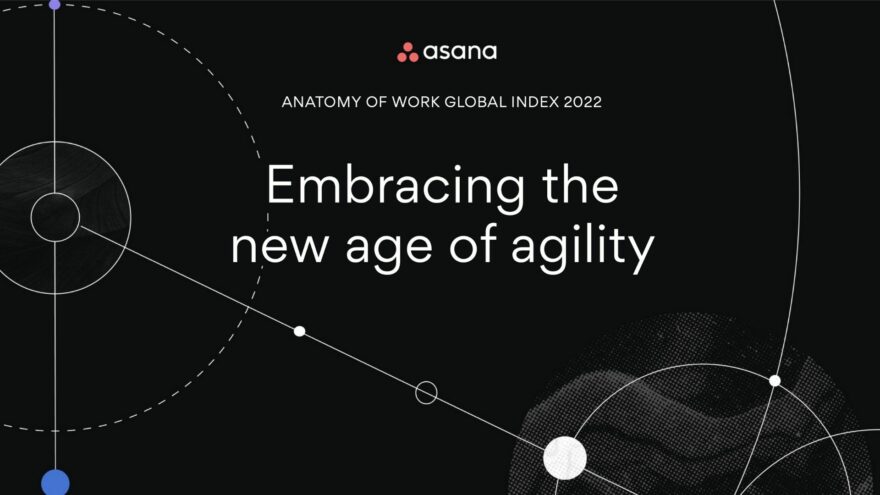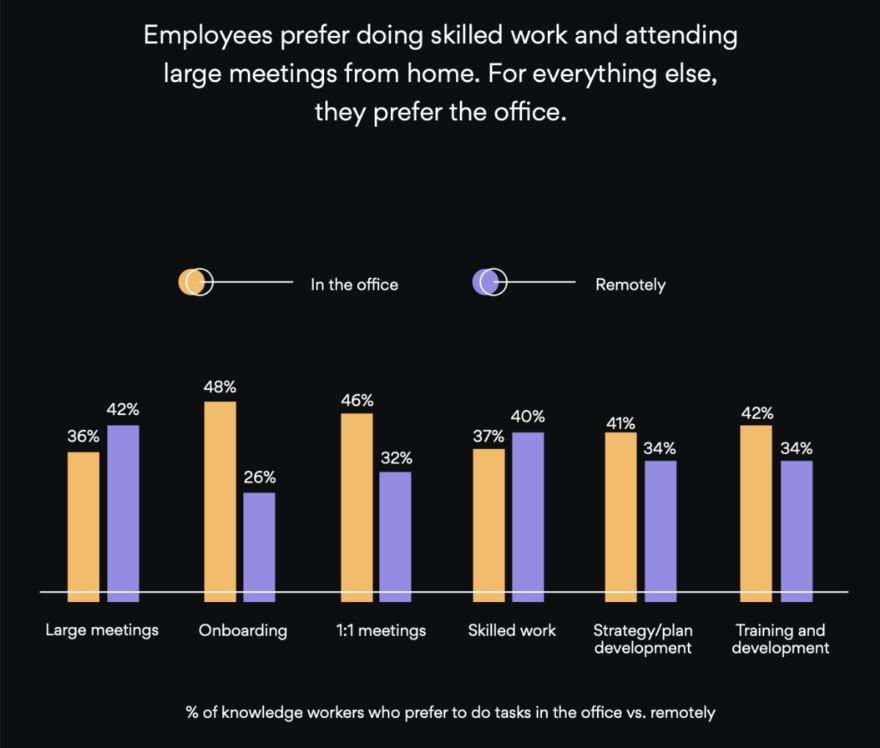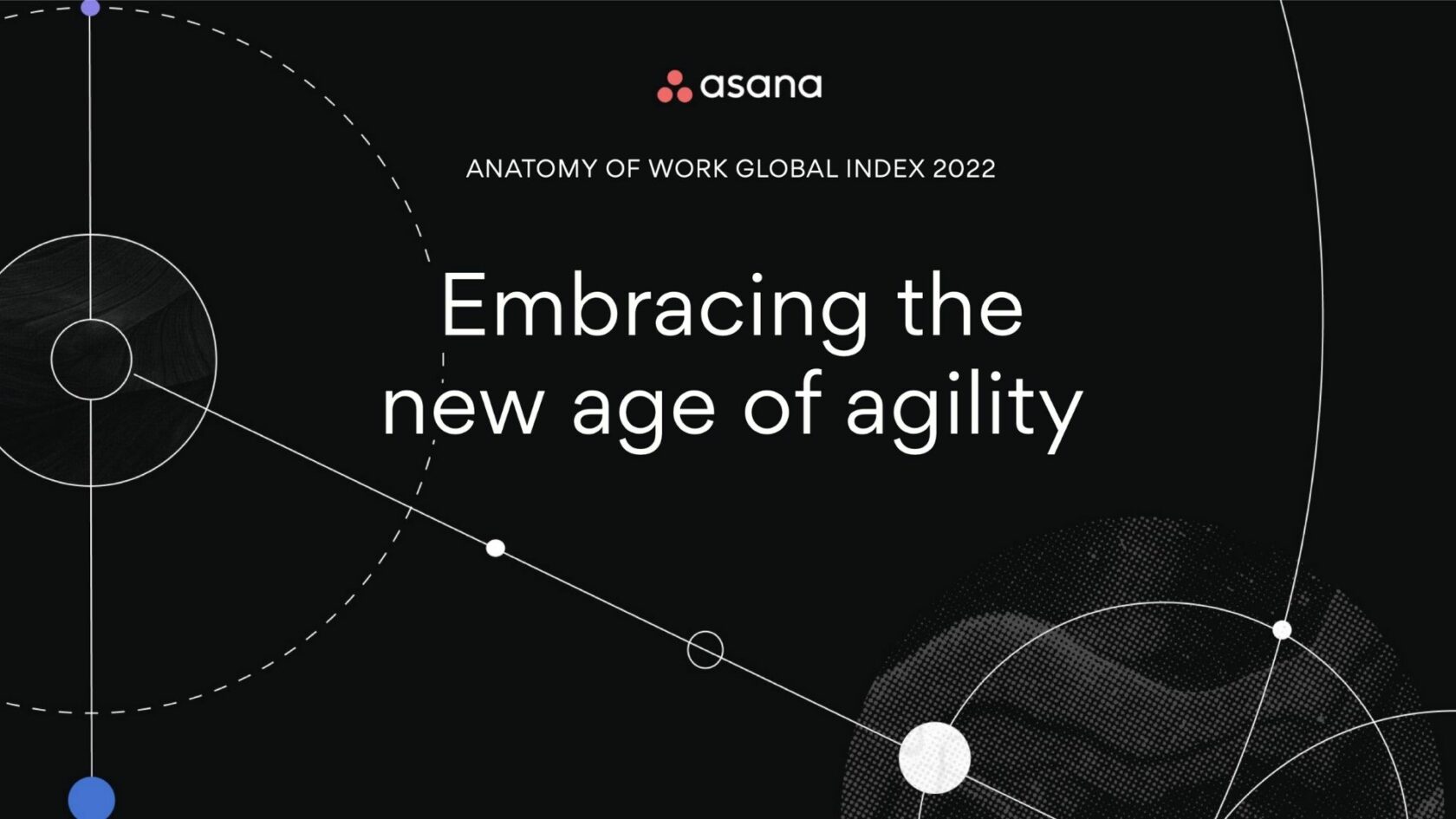Asana 2022 Anatomy of Work Index Study

The uncertainty of the past two years has created a clash of work cultures, but leaders can transform this rare moment into a profound opportunity. Asana surveyed 10,624 global employees to learn what’s working—and what’s not—in their organisations.
Asana’s most recent annual Anatomy of Work Index study found that although employees continue to perform each of the three core types of work, how they engage in them has changed. Notably:
- Employees spend 36% less time on strategic work than they did last year
- Workers are missing 15% of their deadlines due to too many meetings
- 32% of medium-sized businesses and 27% of larger businesses are more likely to miss actions or updates than before, compared to 20% of smaller businesses
- Managers are losing 62% of their workdays on work about work
Work about work
Work about work is an entrenched part of modern organisations and is still the biggest barrier to productivity— one that businesses shouldn’t take lightly. Too many workers are stuck in this black hole, sucked into a world of small tasks that add up to an enormous burden.
With so many tools and notifications to sort through—like emails, meeting reminders, messaging apps—it’s difficult to stay focused on the meeting at hand while being cognisant of upcoming obligations. In this way, technology has enabled the future to infringe upon the present. Gen Z and millennials are especially likely to tune out during virtual meetings, missing actions by multitasking.
Specifically, workers are missing 15% of their deadlines, compared to 26% last year. Why are deadlines so hard to make? 24% of workers believe too many meetings directly lead to missed deadlines.
View the full Index.
Where work happens
The study found that workers do their best skilled work at home, where they can concentrate better. However, they prefer the office for the majority of their interpersonal work, as 49% see the office as more of a social space than they used to, especially when it comes to collaborative tasks like strategy and planning, onboarding, 1:1 meetings, and training and development.
A workplace in which location is determined by workers’ activities, not their job title, is the best way to prioritise both well-being and productivity. The home and the office are different universes, with unique upsides and downsides, and should be viewed accordingly. The most progressive and, ultimately, successful companies will be those that structure their hybrid approach for which environment best suits the activities and goals at hand.
For instance, if an employee has scheduled one-to-ones and group meetings on Mondays, Tuesdays, and Thursdays, they’re best off working from the office. On Wednesdays and Fridays, with no collaborative tasks on the docket, they might have the flexibility to work from home.
It is important to make sure that teams have synchronised days in the office. Rather than letting each individual choose in-office versus at-home workdays, teams need to be on the same schedule in order to get the full benefit of both environments.
Well-being and work
Burnout and imposter syndrome are key challenges that workers face, with 42% suffering both at the same time. Lack of clarity, too many notifications, and hours of meetings all have real consequences beyond annoyance—they directly contribute to these occupational hazards.
In particular, burnout and imposter syndrome disproportionately affect younger workers, causing low morale, miscommunication, a lack of engagement at work, more mistakes, and even attrition. Almost one in four of workers experience burnout four or more times per year, while 40% think it’s an inevitable part of success.

The Great Reshuffle has made clear that workers are rethinking how they spend their time and the relationship they have with their organisation. With work about work taking up a majority of the workday, companies have room for improvement in empowering workers to do the skilled work that makes them feel valued— especially for younger employees, managers, and workers at medium and large companies, who suffer disproportionately from work about work.
However, companies can’t just instruct their employees to shirk busywork and focus on what matters. Change needs to be structural and teams need to work together to think holistically about their workflows.
View the full Index.
Implementing Asana to your business
Asana is the Work Management Platform that has consistently been improving productivity for businesses of all sizes across the world. For information on how your Team can improve and meet all challenges examined on the Anatomy of Work Index, please contact TRC Solutions.
As Asana Partners and long-term Asana users, TRC Solutions are here to support you in getting the most out of the Work Management Platform.
TRC Solutions has a proven track record of guiding companies through the implementation of Business Software – from the pre-sales process to beyond go-live. We bring specialist knowledge and training to your organisation so you can feel comfortable and confident in the success of Asana and meet future challenges head-on.
Learn more about Asana.
Arrange an Asana Presentation.
Implement Asana to your business with a 30-day Free Trial.
Asana is the World’s Most Comprehensive Work Management Platform – it gives Teams everything they need to complete tasks, hit deadlines, and communicate.
Asana empowers your business to improve and manage your entire Team through a unified view of all work – from short-term tasks to long-term projects. Deadlines, budgets, KPIs, messaging, and relevant Team Members are all managed in one place, so tasks and communication are clear and goals are smashed.
View our Asana Playlist on Youtube.


